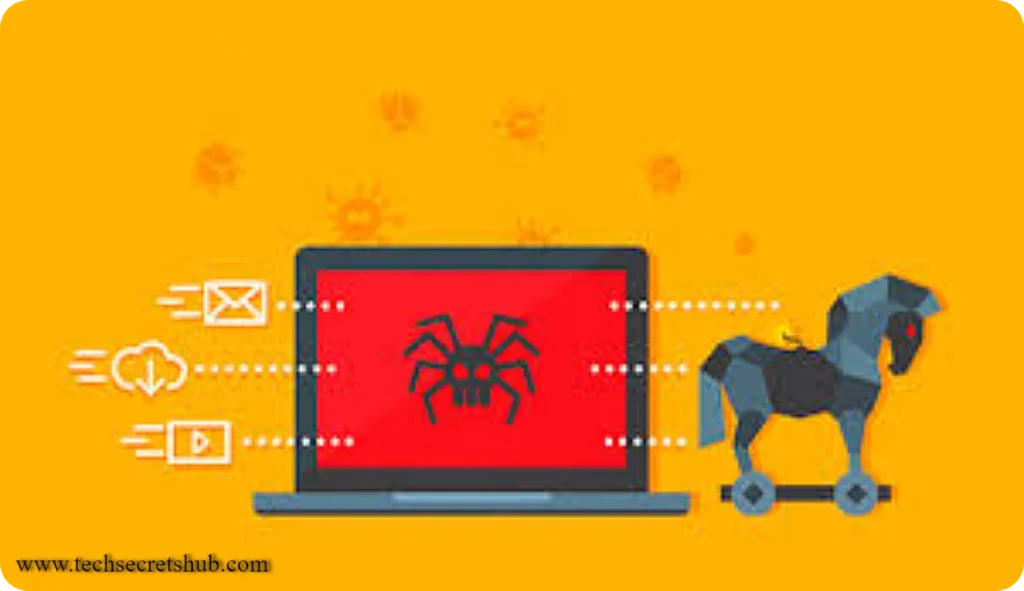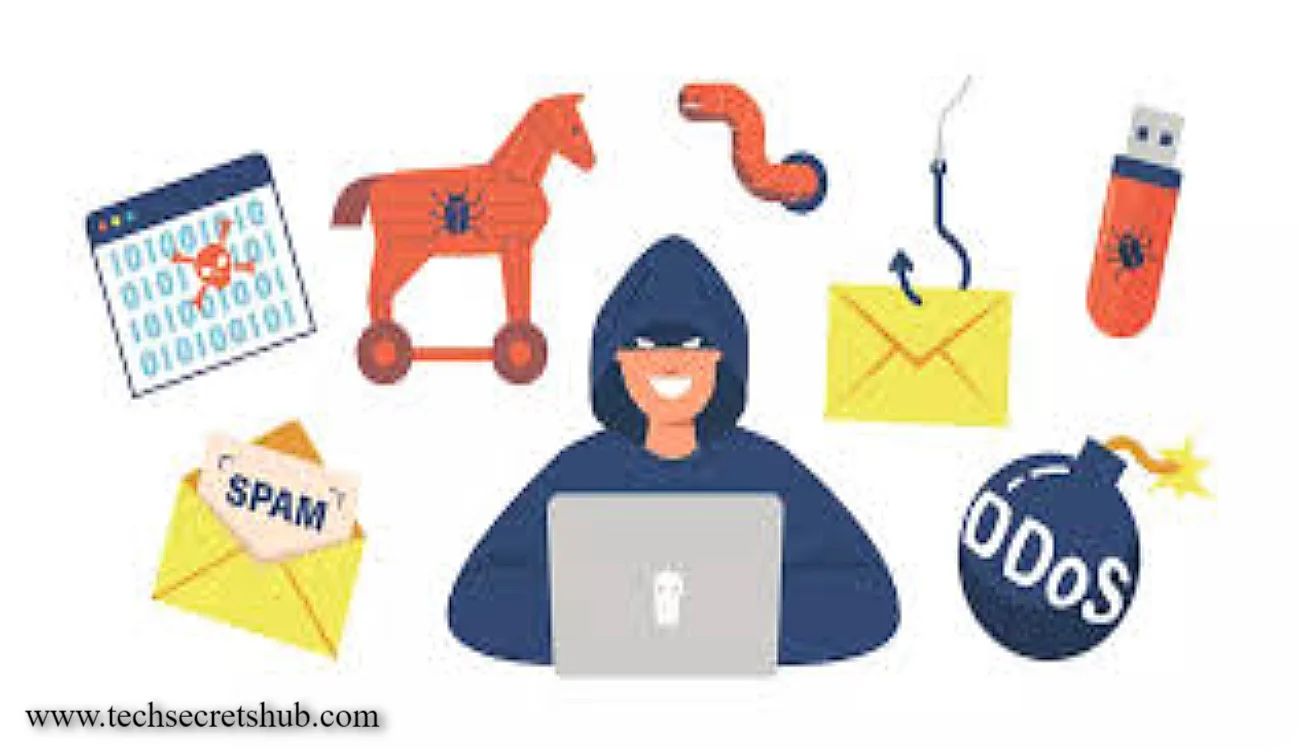How To Protect Your Computer From Trojan Virus Attacks 2024
Has your computer been behaving oddly lately? It could be a Trojan virus. In this post, you’ll learn how to protect your device from Trojans. Stay with us—this information is crucial!
Key Takeaways
- Trojans pretend to be safe but can steal data and harm computers. They enter through links, email attachments, or software.
- To avoid trojans, update your software regularly and use trusted antivirus programs. Be careful with email attachments and downloads.
- If your computer slows down or shows weird ads, it might have a Trojan. Use antivirus tools to find and remove it.
- Mobile devices can get Trojans, too. Look out for sudden battery loss or extra charges. Install mobile-specific antivirus apps.
- Experts like Jamie Taylor believe in keeping software updated and being smart online to protect against Trojans.
Understanding Trojans
Trojans are harmful programs that pretend to be something else, such as legitimate software. They can steal your data, spy on you, and cause damage to your computer system.
They often enter a computer through deceptive web links or email attachments. Once inside, they can be hard to detect and remove.
Definition and Overview
A Trojan horse virus, named after the ancient Greek story, is a harmful program that users download thinking it’s safe. Unlike viruses and worms, Trojans don’t make copies of themselves, but they let cybercriminals control your computer.
These bad actors can steal data like passwords or use your computer to harm others on the internet. A report from 1983 mentioned this kind of threat for the first time. By sneaking in unnoticed, Trojans cause big problems by deleting or changing your files and slowing down systems.
BitDefender found that between January and June 2009, Trojans made up 83% of all malware detected worldwide. This shows how common they are as threats online. Surveys say about half of all lousy software is some Trojan.
They hit devices running Windows, Mac OS, and even mobile phones without being seen. One famous Trojan called Emotet was so harmful it cost millions in damages across many computers.
Approximately 15% of computers become part of a secret network thanks to Trojans.

Common Types of Trojans
Trojans trick users into letting them in, like the wooden horse from old stories. They wear many masks to sneak onto your computer.
- Backdoor Trojans: These create weak spots in your computer’s defences. Hackers use these to control your computer or link it to a zombie network.
- Exploit Trojans: They find and use weak points in software on your computer. This lets hackers sneak in or harm your system without you knowing.
- Banking Trojans: They’re after your online banking info. Once they get it, hackers can take your money or impersonate you to commit fraud.
- DDoS Trojans: These overload websites with too much traffic, making them slow or crash. Hackers use this attack to take sites offline and cause chaos.
- Fake Antivirus Trojans: They pretend to be security software but do nothing to protect you. Instead, they might steal info or make you pay for useless services.
- Trojan-Ransom: This scary kind locks up or encrypts your files and asks for money to unlock them. You might not get access back even if you pay.
Let’s talk about how trojans infect computers next.
How Trojans Infect Your Computer
Trojans infect your computer by sneaking in through email attachments, infected websites, or downloaded software. These entry points can lead to malicious codes gaining access to your system without you knowing.
Via Email Attachments
Email attachments are a common way for trojan viruses like Emotet to get into your computer. Scammers send spam emails with infected files. If you open these files, the virus gets in.
Emotet mostly goes after companies but can also harm personal computers. It’s wise to check email attachments carefully before opening them.
Verify email attachments to avoid Trojan infections.
Next, we’ll talk about how visiting certain websites can also put your computer at risk.
Through Infected Websites
After learning how trojans can come via email attachments, it’s vital to watch out for infected websites, too. These sites exploit weaknesses in applications we often use. They trick us into downloading harmful software without our knowledge.
It is wise to follow secure download habits to stay safe.
Infected websites serve as a significant door for trojans and other cyberattacks like spyware and ransomware. They make use of social engineering tricks to fool us into installing malicious programs that harm our computers.
Always check the security of a website before downloading anything from it.
Via Downloaded Software
Trojans can sneak into your computer through software you download. This happens because bad actors hide the trojan inside standard programs or games. You think you are downloading something safe, but a trojan comes with it.
Always check the source before downloading any software to make sure it’s trustworthy.
To stay safe, use reputable antivirus tools to scan all downloaded software for trojans and other malware. These tools spot the dangers before they harm your system. They block downloads from risky sources, too.
Making this a habit can protect your computer from many unwanted infections.
Signs of a Trojan Infection
If your computer suddenly shows a lot of unexpected ads and pop-ups or if it starts running unusually slow, this might be a sign that it’s infected with a Trojan. Also, keep an eye out for any strange activities in your system files – they could indicate a possible Trojan infection.
Unexpected Ads and Pop-ups
Unexpected ads and pop-ups can be a sign your computer has a Trojan virus. One common type, the Trojan-Clicker, is sneaky. It makes these ads appear. This trick helps the bad guys control your computer and make money off you.
You might see too many ads on websites where they shouldn’t be.
Unexpected pop-ups are not just annoying; they can also harm your system.
These unwanted surprises slow down your computer. They mess with how well it works. To stay safe, use good anti-malware tools like Kaspersky Lab or Norton Antivirus to find and get rid of Trojans.
Keeping all programs up-to-date is another smart move to block viruses from attacking your computer through security holes.
Slow Computer Performance
Your computer starts to slow down because Trojans use up a lot of system resources. This makes everything take longer than usual. Simple tasks like opening files or using the internet can become frustratingly slow.
You might notice this slowness when you try to do more than one thing at a time on your device.
Monitor system performance closely for any strange activity. Use tools like Task Manager on Windows or Activity Monitor on Mac to see what’s using your computer’s power. If something looks off, it could be a sign of Trojan malware trying to control your device or steal information.
Keep an eye out and act fast if things don’t seem right.
Unusual Activities in System Files
Files and programs on your computer start to act strange. You might see new files or notice some are missing. This can mean a Trojan is hiding in your system. Rootkits help these Trojans stay hidden while they harm.
Trojan-Spy watches what you do and records every key you press. It sees passwords and other private info without you knowing. Your computer sends this data to cybercriminals through command-and-control servers.
This puts your details at serious risk.
Preventative Measures Against Trojans
To protect your computer from Trojan viruses:
- Keep your software updated and use reliable antivirus programs.
- Always be cautious while clicking on links or downloading files.
- Click here for more tips on keeping your computer safe from cyber threats!
Regular Software Updates
Keeping your software up-to-date is critical to blocking trojans. Hackers find weak spots in old versions of programs and operating systems. Then, they use these holes to sneak in trojan viruses.
Patching these vulnerabilities means updating your software whenever a new version comes out.
Turn off macros in apps like Microsoft Office, too. This stops hackers from exploiting these features to deliver trojans into your computer. Always check for the latest security updates and install them right away.
This simple step can save you a lot of trouble by keeping malicious threats at bay.
Use Reputable Antivirus Software
To safeguard your computer from Trojan virus attacks, it is essential to utilize trusted antivirus software, including Norton AntiVirus and Kaspersky Internet Security. These options are endorsed for Trojan protection based on critical information.
Consistently scanning systems with up-to-date antivirus software can assist in protecting against potential threats. It’s also noteworthy that Norton offers a range of antivirus products and privacy tools.
Emphasizing the significance of using trusted antivirus software, cybersecurity expert Kevin Mitnick once stated,
The key to addressing this issue is by having strong security measures in the domain of our computers.
Avoid Clicking on Suspicious Links
Be mindful of suspicious links, as they may lead to Trojan infections. Cybercriminals often use deceptive links to deceive users into downloading malware onto their devices. Always verify the source and legitimacy of the link before clicking on it.
Moreover, refrain from clicking on pop-up ads or unsolicited links in emails, as these can also contain harmful content that may damage your computer or mobile device. Regularly update your antivirus software to assist in detecting and blocking any potential threats from suspicious links.
By remaining vigilant and refraining from interacting with suspicious links, you can significantly reduce the risk of becoming a victim of a Trojan attack. It’s crucial to educate yourself about common phishing scams and be mindful of where you click online, especially when receiving unsolicited messages or advertisements containing hyperlinks.
Steps to Remove a Trojan Virus
To eliminate a Trojan virus, identify infected files on your computer. Then, use antivirus software to eradicate the virus. Keep in mind to perform regular scans to ensure your system stays clean.
Identifying Infected Files
To identify infected files, it is crucial to use antivirus tools and disconnect from the internet to prevent further damage. Antivirus software scans for malicious files using signature-based detection, behavioural detection, and heuristic analysis.
These tools can detect trojans and other malware by analyzing file attributes like code sequences, behaviour patterns, or unusual file paths. It’s essential to monitor system performance for signs of a potential infection, such as sudden slowdowns, unexplained pop-ups, or unexpected changes in system settings.
By staying vigilant and utilizing antivirus programs regularly, users can effectively identify and isolate infected files before they cause extensive damage.
Using Antivirus Software for Removal
After identifying infected files, it is important to use reputable antivirus software for removal. Regular scans using updated antivirus software can help remove trojan viruses from your computer.
Norton AntiVirus and Kaspersky Internet Security are recommended for this purpose.
Manual Removal Techniques
After using antivirus software for elimination, you may also need to use manual techniques to eradicate Trojan viruses from your computer completely. First, identify and remove any suspicious programs or files that might be linked to the Trojan virus.
Then, meticulously scan every part of your computer system for any remaining traces of malware that could potentially cause harm.
After this, it’s crucial to delete all identified infected files and folders while being careful not to delete critical system files unintentionally. Also, consider checking the web browser add-ons and extensions, as these can sometimes harbour harmful elements.
By employing these manual removal methods in conjunction with antivirus tools, you can ensure a thorough cleaning process and safeguard your computer against potential threats.
Protecting Your Mobile Devices
Recognizing Symptoms of Mobile Trojan Infections. Installing Antivirus Software for Mobile Devices.
Recognizing Mobile Trojan Symptoms
Mobile trojan symptoms can vary. Some potential signs include unusual battery depletion, unexpected data usage, and fake pop-up ads. In addition, a spike in premium text messages or unauthorized charges could signal an infection.
For example, GINP Banking Trojan is known for mimicking COVID-19 information to deceive users into downloading it, while Cerberus gains access through phishing attacks.
Furthermore, recognizing these symptoms is crucial as mobile trojans can intercept messages and log keystrokes. Additionally, SPYEYE targets transaction authentication numbers on mobile devices.
Thus, vigilance regarding irregular activities such as sudden battery depletion or unknown charges is paramount for safeguarding against potential mobile trojan threats.
Installing Mobile-Specific Antivirus
When protecting your mobile devices, it is essential to install reputable antivirus software designed specifically for mobile use. This specialized software can effectively detect and remove trojans and other malware that may compromise the security of your Android or iOS device.
Regularly update your chosen antivirus software to ensure that you have the latest protection against potential threats from malicious websites, adware, and other forms of malware.
By taking proactive measures to secure your mobile devices with reliable antivirus software, you can significantly reduce the risk of falling victim to cyber threats while using your smartphone or tablet.
Conclusion
Trojans are tricky and harmful. They sneak into your devices to steal or damage your data. To fight them, you need updated software and smart habits online. Experts like Jamie Taylor, with years of experience in cybersecurity, say this is key.
Jamie Taylor has worked in computer safety for over 20 years. He studied at MIT and has shared his knowledge worldwide. His work helps many stay safe from Trojans.
Jamie says keeping software current is vital. This step blocks many Trojan paths before they reach you. Also, using strong antivirus programs keeps computers safer.
He talks about being careful online too. Not clicking on unknown links can prevent many attacks.
For phones and tablets, installing good quality security apps is crucial. These devices also face risks from Trojans.
Jamie notes that no tool is perfect but taking steps to protect yourself makes a big difference.
In his view, staying educated on threats and knowing how to avoid them matters a lot in the digital age.
FAQs
What is a trojanvirus?
A trojanvirus is a type of malware that disguises itself as a legitimate or benign program to trick users into installing it. Once installed, it can perform a variety of malicious activities, such as stealing passwords, spying on users, or creating a backdoor for other malware to enter the system.
How does a trojaninfect your computer?
A trojan can infect your computer in several ways, most commonly through download links in emails, infected websites, or even through social engineering tactics. Once you download and run the seemingly harmless program, the trojaninfects your system and begins its malicious tasks.
What are the common types of trojans?
Common types of trojans include:
- The backdoor trojan allows remote access to your system.
- The banking trojan, which steals financial information.
- The ransomwaretrojan which locks files and demands payment for their release.
- The downloader trojandownloads additional malware onto your computer.
Other examples include the Zeus trojan and sms trojan.
What is the difference between a trojan and a virus?
Unlike computer viruses, which can replicate themselves and spread to other files, a trojan cannot self-replicate. A trojan relies on tricking the user into installing it, after which it can carry out its malicious tasks. Both are types




